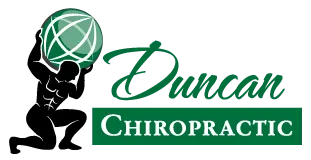
In our journey to bettering our health, something to keep in mind is to always pay attention to your food labels when grocery shopping. We want to make informed choices and select products that align with our health goals; however, the world of food labeling can be complex and, at times, deceptive. As a chiropractor's office, we understand the importance of nutrition in overall health, and we're here to shed light on the intricacies of food labels. So let’s get into it!
Understanding Food Labels
Food labels are meant to provide consumers with information about the product's nutritional content, ingredients, and serving size. This information can help you make healthier choices and manage your dietary intake effectively. However, it's crucial to approach these labels with a critical eye. Not everything is as it seems.
Serving Size Matters
The serving size on a food label can be the first misleading thing people see. Manufacturers often list smaller serving sizes to make the product appear healthier than it is. For example, a bag of chips may have a serving size of just a few chips, whereas most people consume a whole bag at once. To get an accurate picture of the nutritional content, be sure to adjust the values based on your actual portion size.
Misleading Marketing Claims
Food labels are designed to grab your attention, and sometimes this includes buzzwords like "natural," "low-fat," or "organic." While these claims might seem appealing, they don't always indicate a healthy choice. For example, "low-fat" products may contain high amounts of sugar or artificial additives. Or how “organic” doesn’t mean herbicides or pesticides weren’t used, it just means that the ones applied met the USDA's production standards for the term. It's essential to examine the entire label, not just the highlighted phrases.
Hidden Sugars
One of the most deceptive aspects of food labels is the presence of hidden sugars. Did you know that “sugar free” might just mean that white cane sugar wasn’t used? That doesn’t mean a different type wasn’t! Sugar can appear under various names, such as high fructose corn syrup, sucrose, or maltose. There are actually over 50+ different names companies use on food labels instead of “sugar”. Even seemingly healthy foods like yogurt or granola bars can contain high amounts of added sugar. Check the ingredients list for any form of added sugar to make an informed choice.
Ingredient List
The ingredient list provides valuable insight into what you're consuming. Ingredients are listed in descending order by weight, so the primary components come first. Be cautious of products with lengthy lists of artificial additives, preservatives, and unpronounceable ingredients. Whole, natural foods with minimal ingredients are generally a better choice for your health.
Pay Attention to the Nutritional Facts
Focus on the nutritional facts panel, which details information about calories, fat, protein, carbohydrates, and essential vitamins and minerals. Look for products that are lower in saturated and trans fats, added sugars, and sodium, and higher in fiber and essential nutrients.
You Are What You Eat
In the journey towards better health, the foods we choose to consume play a significant role. While food labels can be helpful, they can also be deceiving if you don't approach them with a critical eye. As your chiropractor's office, we emphasize the importance of a balanced diet to support your overall well-being. To make informed choices, be mindful of serving sizes, marketing claims, hidden sugars, ingredient lists, and the nutritional facts panel. When you understand how to interpret food labels, you can make healthier choices that promote a healthier you.
